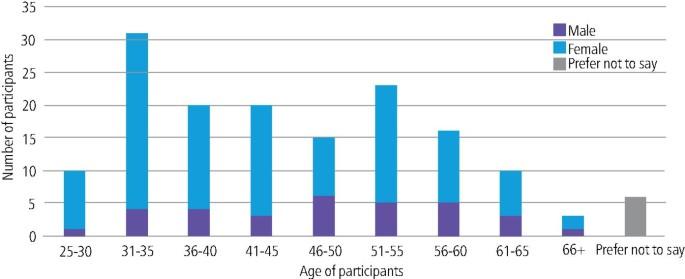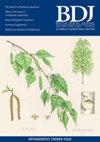对特护专科人员及其专业受训人员的调查。
IF 2.3
4区 医学
Q2 DENTISTRY, ORAL SURGERY & MEDICINE
引用次数: 0
摘要
1)探索目标人群的职业生涯,包括地点;2)调查他们目前的角色和工作模式;3)从员工的角度探讨对该专业及其未来方向的看法。方法采用Qualtrics软件于2022年对全国特护牙科医护人员进行在线问卷调查(MRA-21/22-29397)。参与者通过多种专业途径招募。在Microsoft Excel Version 16.77中导出数据并进行分析。结果约有一半的目标人群(n = 164; 51%),包括咨询师(n = 50; 30%)、专科实习生(n = 23; 14%)和其他人群(n = 91; 56%),如专科医生(C级)和高级牙科医生。四分之三的参与者是女性(n = 122; 75%),其中一半以上是兼职(n = 94; 58%)。最常见的是社区牙科服务(n = 83, 51%),其次是医院和社区牙科服务(n = 32, 20%)和医院牙科服务(n = 25, 16%)。专家们对有特殊护理需要的人难以获得护理以及大量不适当转诊到他们的服务表示关切。鉴于全国人口日益老龄化和医疗状况复杂,几乎所有人都对劳动力能力和覆盖面不足表示关切。具体关注的问题涉及培训途径的规定以及适当薪酬的专家角色的有限供应和可及性。结论特护牙科劳动力以女性为主,兼职人员较多。参与者报告了对专业规模、患者需求和培训机会的担忧。通过对预期人口需求的建模,建议进行劳动力规划和创新护理途径,以确保公平的未来服务。本文章由计算机程序翻译,如有差异,请以英文原文为准。

A survey of the special care specialist workforce and its speciality trainees
Objectives 1) To explore the professional careers of the target population, including location; 2) to investigate their current role and working patterns; and 3) to explore the perceptions of the speciality and its future direction from the perspective of its workforce. Methods An online questionnaire survey of the special care dentistry workforce nationally was conducted in 2022 (MRA-21/22-29397) using Qualtrics Software. Participants were recruited via multiple professional routes. Data were exported and analysed in Microsoft Excel Version 16.77. Results Approximately half the target population responded (n = 164; 51%), comprising consultants (n = 50; 30%), specialist trainees (n = 23; 14%) and others (n = 91; 56%), such as specialists (Band C) and senior dental officers. Three-quarters of participants were female (n = 122; 75%), with over half working part-time (n = 94; 58%). Most practised in the community dental service (n = 83; 51%), followed by a combination of both hospital and community dental services (n = 32; 20%), and hospital dental service (n = 25; 16%). Specialists raised concerned about poor access to care for people with special care needs and the volume of inappropriate referrals to their services. Given an increasingly ageing and medically complex population nationally, almost all raised concerns about inadequate workforce capacity and coverage. Specific concerns related to training pathway provisions and the limited availability and accessibility of appropriately remunerated specialist roles. Conclusion The special care dentistry workforce is female-dominated with many part-time workers. Participants reported concerns regarding the size of the specialty, patient needs and training opportunities. Workforce planning, informed by modelling of anticipated population needs, and innovation care pathways are recommended to ensure an equitable future service.
求助全文
通过发布文献求助,成功后即可免费获取论文全文。
去求助
来源期刊

British Dental Journal
医学-牙科与口腔外科
CiteScore
3.10
自引率
15.40%
发文量
1096
审稿时长
4-8 weeks
期刊介绍:
The role of the BDJ is to inform its readers of ideas, opinions, developments and key issues in dentistry - clinical, practical and scientific - stimulating interest, debate and discussion amongst dentists of all disciplines. All papers published in the BDJ are subject to rigorous peer review.
 求助内容:
求助内容: 应助结果提醒方式:
应助结果提醒方式:


